

At Ease With Hand and Mind
Calligraphy, Literature, and Contemporary Art
July 27 – Sept 27, 2025
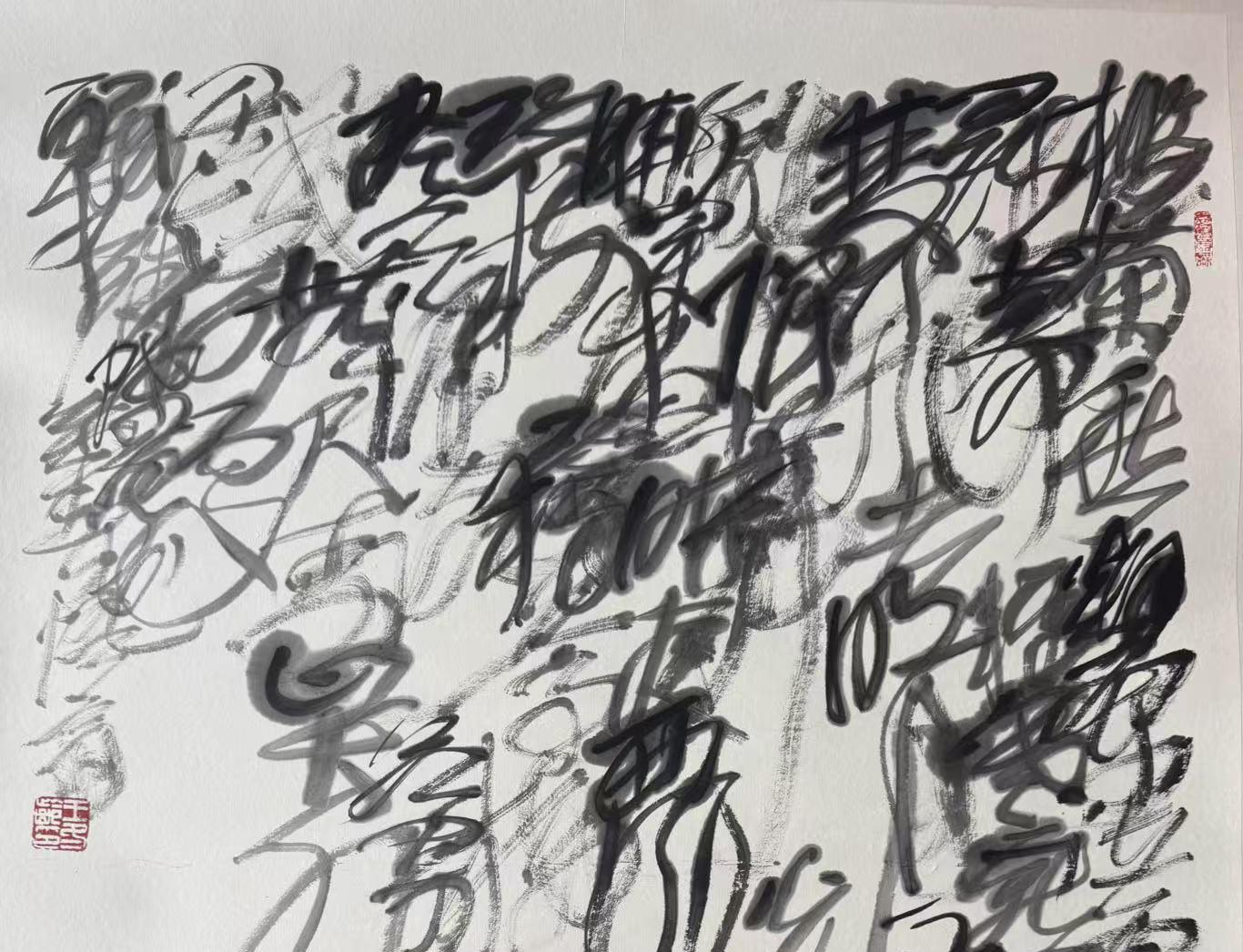

LIU ZHENGCHENG 刘正成
b. 1946 in Chengdu, China; Lives and works in Beijing, China
Liu Zhengcheng is one of China’s most influential contemporary figures in the field of calligraphy. With a career spanning over five decades, Liu has played a pivotal role in both the scholarly advancement and public promotion of Chinese calligraphic arts. He currently serves as President of the International Association of Calligraphers and Painters and is Editor-in-Chief of the monumental Complete Collection of Chinese Calligraphy—a projected 100-volume scholarly series, of which 85 volumes have been published to date.
Liu is best known not only as a practicing calligrapher, but as an institution builder and editor who has shaped the discourse around calligraphy in China and abroad. For 18 years, he held the position of President and Editor-in-Chief of Chinese Calligraphy magazine, the most authoritative publication in the field. He also served for many years as Executive Director and Deputy Secretary-General of the Chinese Calligraphers Association, the nation’s leading professional body for calligraphy.
In recognition of his contributions to the field, Liu has received numerous honors throughout his career. In 1992, he was awarded the prestigious Special Government Allowance by the State Council of China—a lifetime honor given to select experts for their exceptional work in their respective disciplines. He is also a recipient of the Outstanding Contribution to Calligraphy Art Award presented by the Chinese Calligraphers Association.
Liu’s scholarly output is both prolific and foundational. He is the chief editor of The Encyclopedia of Chinese Calligraphy Appreciation, a landmark reference work that received the Fourth National Book Award. His own writings include the three-volume Collected Writings on Calligraphy by Liu Zhengcheng and An Introduction to the Art of Calligraphy, both widely used in academic and artistic circles. Expanding beyond nonfiction, Liu has also authored Transformation Tableaux of the Hell, a historical novel collection that reflects his broader intellectual engagement with Chinese cultural history.


Cursive Script Scroll of a Painting Poem after Jin Nong’s Rhyme, 2025
Ink on xuan paper
134 x 35 cm | 54.5 x 13.5 in


步韵白乐天题画诗草书轴
Cursive Script Scroll of a Painting Poem after Bai Letian’s Rhyme, 2025
Ink on xuan paper
134 x 35 cm | 54.5 x 13.5 in


Four-Character Horizontal Scroll: Mind Without Obstacles, 2025 Ink on xuan paper
35 x 134 cm | 13.5 x 54.5 in


Four-Character Horizontal Calligraphy Scroll: Shifting Thought, Marvelous Attainment, 2025
Ink on xuan paper
35 x 134 cm | 13.5 x 54.5 in
迁想妙得四字横屏

BIOGRAPHY SHAO YAN 邵岩
b. 1962 in Shandong, China; Lives and works in Beijing, China
Shao Yan began studying calligraphy from the age of six under the influence of his family, diligently copying classical modelbooks such as Sanxitang Fatie and Chunhuage Tie. He immersed himself in the works of Wang Xizhi, Wang Xianzhi, Yan Zhenqing, Su Shi, Huang Tingjian, Mi Fu, Cai Xiang, as well as in ancient stele inscriptions. Believing that true mastery of calligraphy matures with time, where “the person and the writing age together,” Shao Yan considered all work before the age of 60 as foundational.
He also studied large-scale expressive ink painting and frequently created minimalist calligraphic works using a large, split brush. In 1986, at age 24, his work Clear Snow (Qingxue) won the Excellence Award at the National Exhibition of Young and Middle-Aged Calligraphers, marking a major turning point in his artistic journey.
Inspired by contemporary Japanese calligraphy exhibitions, Shao Yan committed to a ten-year plan focused on the study of one to four-character compositions. Over this period, he systematically catalogued more than 2,000 frequently used Chinese characters, categorizing them by stroke structure and compiling his own dictionary. Representative works from this period include Encirclement (Wei), Ocean (Hai), and Land (Tudi), through which his distinctive style of minimal-character calligraphy began to take shape.
During this phase, Shao Yan extended his focus to seven-character calligraphic works. He believed this number of characters offered a structural breakthrough: it not only challenged conventional compositional units and spatial logic in traditional calligraphy, but also provided a viable format for modern multi-character works. Over this decade, he received First Prize at both the 6th and 7th National Exhibition of Young and Middle-Aged Calligraphers for works such as Peach Blossoms Fall in the Rain of the Mortal World and Dry Lotus Leaves Echo in the Sound of Rain. Other notable pieces include Several Plum Blossoms, the Heart of Heaven and Earth. He also traveled to Japan, South Korea, and Malaysia to study the state and development of calligraphy in Asia.
Building on his minimal-character practice, Shao Yan pioneered a new art form called “Ink Projection” (Shemo)—an accidental innovation sparked by the use of a long-tipped brush and his observations during a medical procedure involving cardiac stents (necessitated by the stress of intense creative exertion).
Ink Projection includes both abstract performative calligraphy and hybrid works combining Chinese characters with modern calligraphic forms.

BIOGRAPHY SHAO YAN 邵岩
b. 1962 in Shandong, China; Lives and works in Beijing, China
By creatively integrating the brush and medical syringe, he developed an expressive technique that broke new ground. Representative works include Auspicious Fortune Arrives, Longevity as Steadfast as a Mountain, and Centripetal Force.
During this period, he traveled to the U.S. and Italy to study Western art. He explored the integration of Chinese calligraphic writing with Western art movements. Ultimately, he concluded that the essence of Chinese calligraphy lies in the art of Chinese character writing itself.
Shao Yan has continued to deepen his exploration of both minimal-character calligraphy and Ink Projection, producing important works such as Flowers Bloom Through the Seasons and When the Wind Blows, Flowers Dance. He participated in the Hong Kong Chinese Ink Art Exhibition, held exchanges with artists in Belgium, and took part in the Xu Zhimo Poetry Festival and Calligraphy Exhibition at King’s College, University of Cambridge. There, he engaged with Western art critics, professors, and artists to introduce and promote the art of Chinese calligraphy on an international stage.
Looking ahead to the next 10 to 20 years, Shao Yan plans to further advance both minimal-character calligraphy and Ink Projection, producing new works and constructing a comprehensive artistic system. Emphasizing the structural and symbolic richness of Chinese characters, he strives to transcend the formal constraints of Western abstract expressionism through rhythm of brush and structure of form, as well as to open a new, distinctively Chinese pathway for modern calligraphy.
Over the past forty years, Shao Yan has participated in more than 90 domestic and international art exhibitions, held six solo shows, and published over ten books. He currently serves as a Research Fellow at the China National Academy of Painting and as a member of the New Literary Arts Group Committee of the China Calligraphers Association.

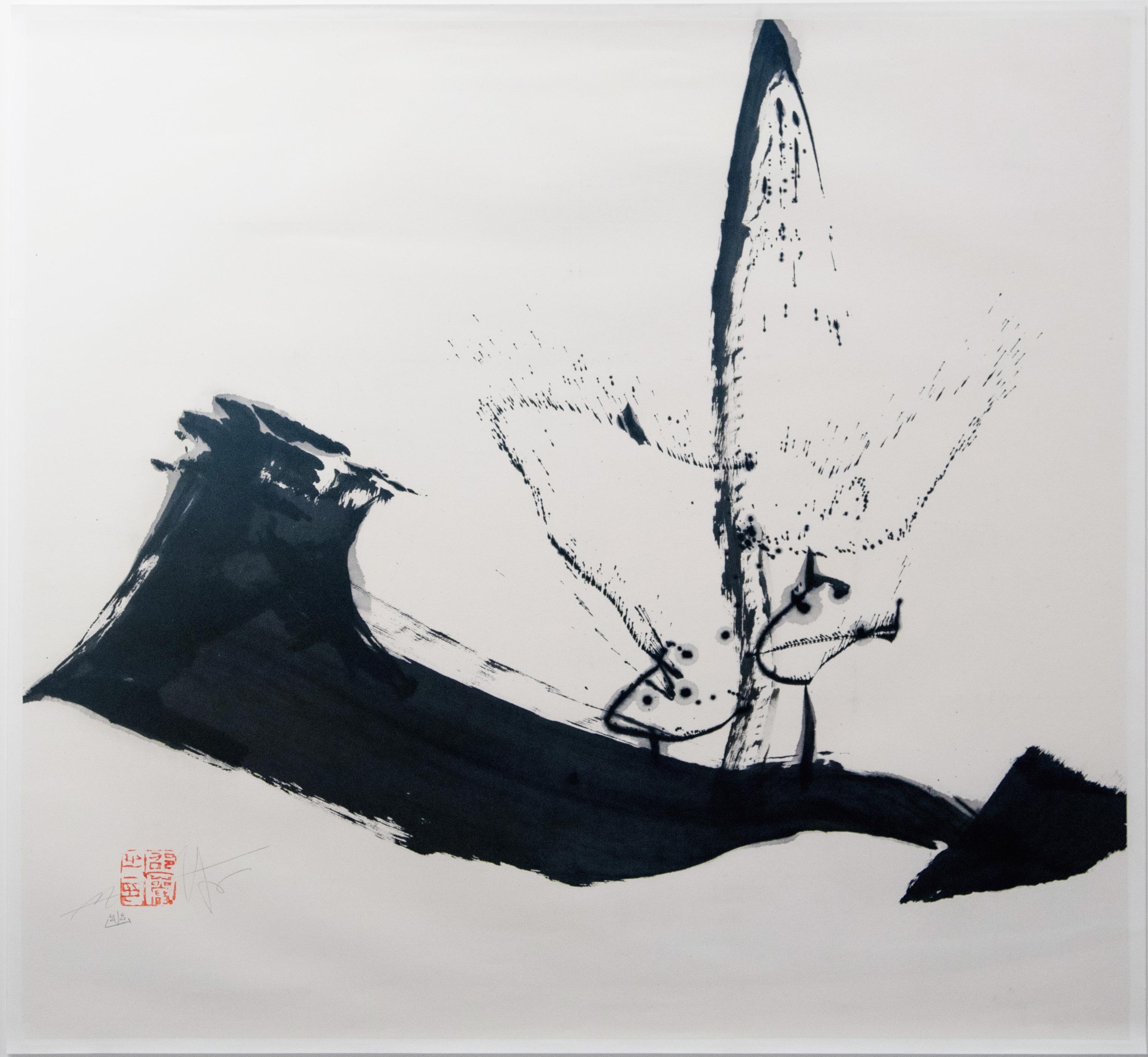
36 x 38 in, 91.5 x 96.5 cm
Framed: 41.75 x 44.75 in, 106 x 113.7 cm
幽 Ethereal, 2025
Ink on xuan paper


馬上相逢 See you soon, 2025
Ink on xuan paper
19 x 71 in | 48.25 x 180.25 cm


Framed: 41.75 x 44.75 in, 106 x 113.7 cm
幽 Ethereal, 2025
Ink on xuan paper
36 x 38 in, 91.5 x 96.5 cm

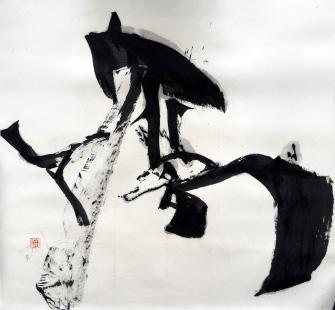
36 x 38 in | 91.5 x 96.5 cm
夢 Dream, 2025
Ink on xuan paper

BIOGRAPHY
WANG DONGLING 王冬齡
b.1945; lives and works in Hangzhou, China
Wang Dongling was born in 1945 in Jiangsu Province, China.
Wang Dongling is one of China’s most highly regarded ink artists and widely recognized as one of China’s greatest living calligraphers. Trained in classical calligraphy, he studied at the progressive Zhejiang Academy and became increasingly involved in China’s avant-garde movement in the mid-1980s.
While continuing to work in traditional styles, he also explores the abstract potential of calligraphy in freely brushed works that can be compared with Western gestural abstraction. His latest Chaos Script series is considered a breakthrough in contemporary Chinese calligraphy, and he has been asked to perform this unique style of writing in a large scale format at institutions around the globe.
His work has been collected by numerous institutions including the British Museum and The Metropolitan Museum of Art, New York.
SELECTED PUBLIC COLLECTIONS
The Metropolitan Museum of Art, New York, USA
Guggenheim Museum, New York, USA
British Museum, London, UK
Asia Society New York, USA
The Los Angeles County Museum of Art, Los Angeles, USA
North Dakota Museum of Art, North Dakota, USA
National Art Museum of China, Beijing, China
The Palace Museum, Beijing, China
Military Museum of the Chinese People’s Revolution, Beijing, China
Zhejiang Art Museum, Hangzhou, China
National Library of China, Beijing, China
University of California, Berkeley, California, USA
Yale University, Connecticut, USA
Harvard University, Massachusetts, USA
Peking University, Beijing, China
Spencer Museum of Art, Kansas, USA

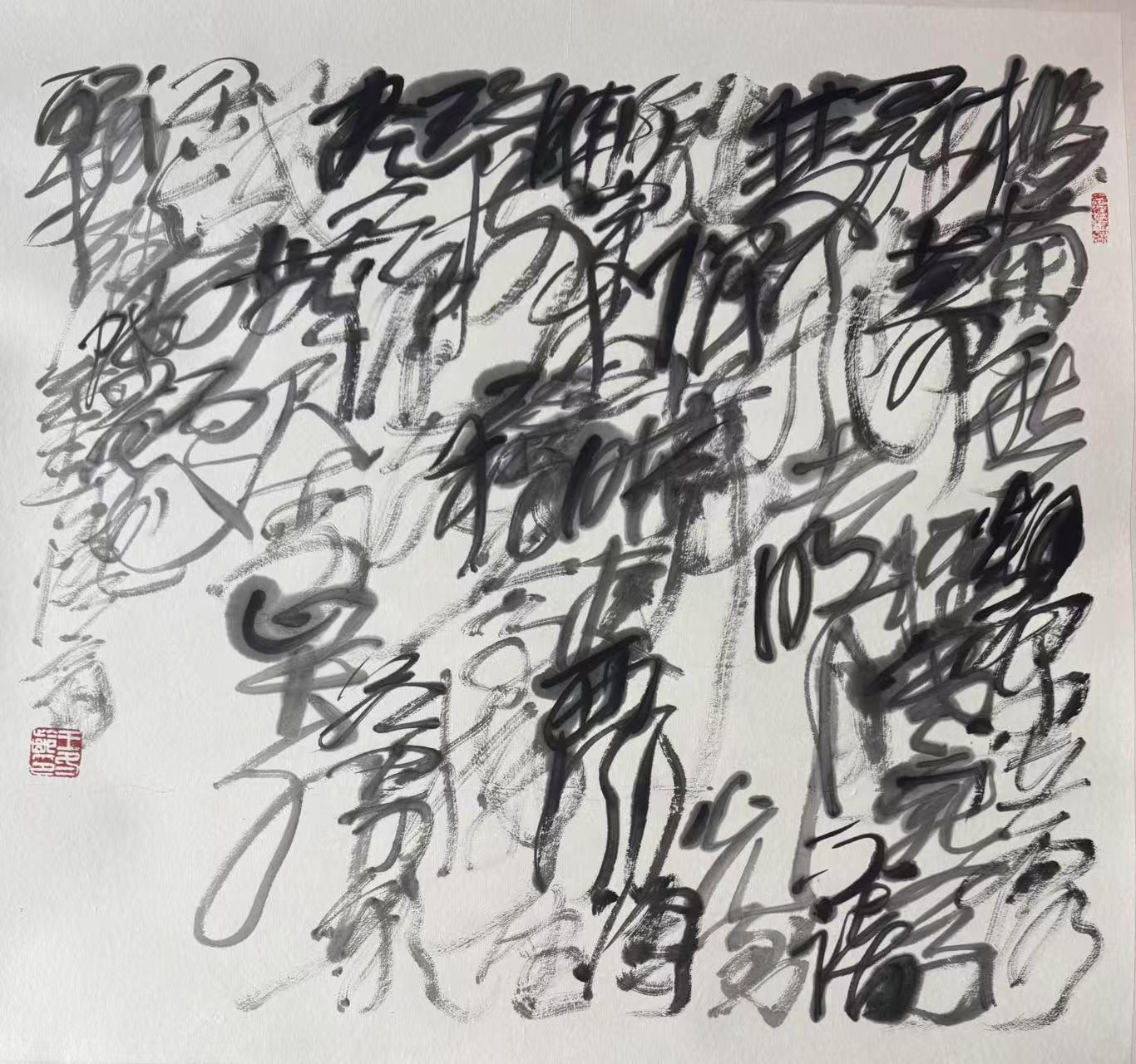
晏殊词乱书 Yan Shu’s Words in Chaos Script, 2016
Ink on xuan paper
29 1/2 x 31 1/2 in | 75 x 80 cm

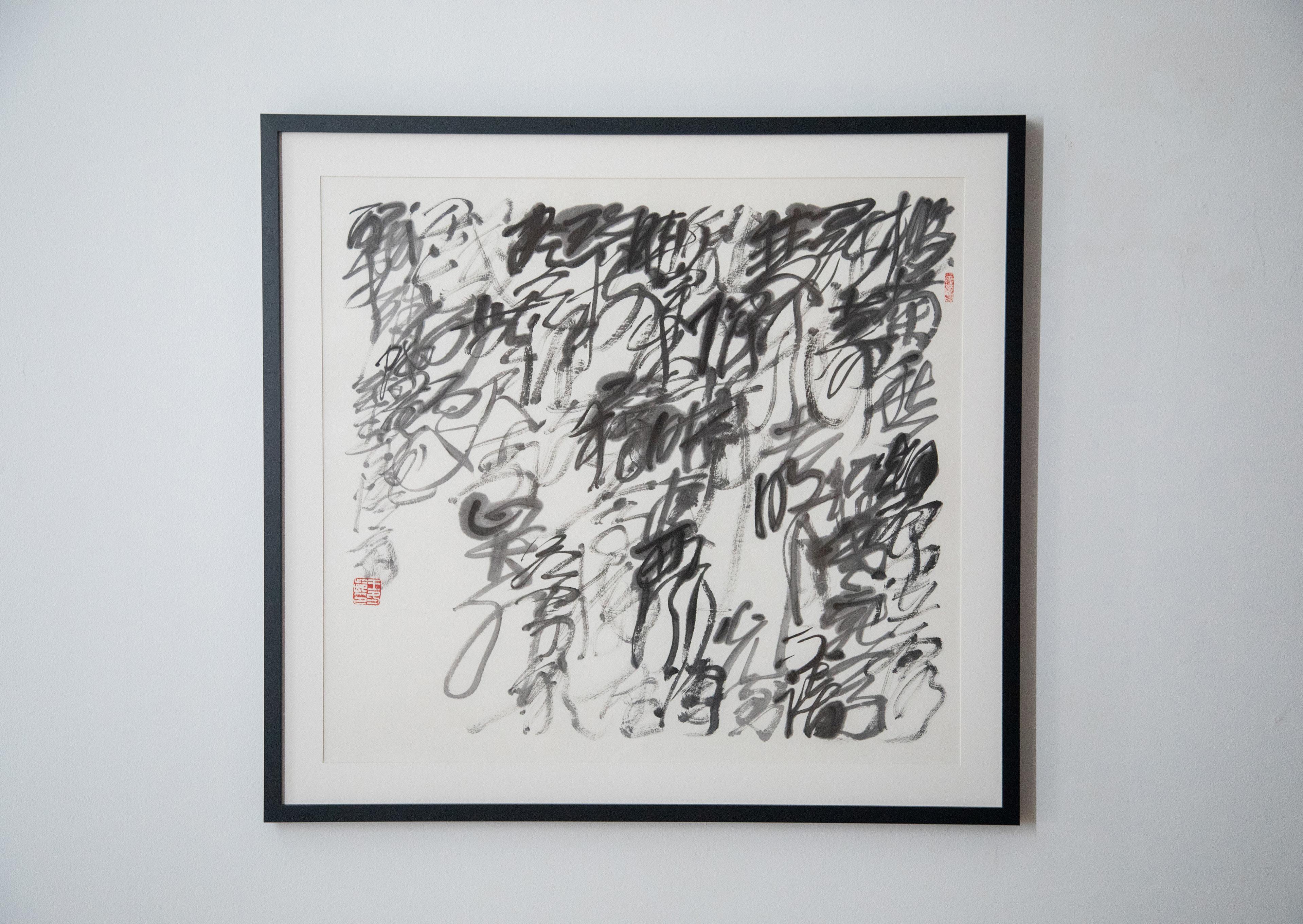
晏殊词乱书 Yan Shu’s Words in Chaos Script, 2016
Framed: 89 x 95.25 cm | 35 x 37.5 in

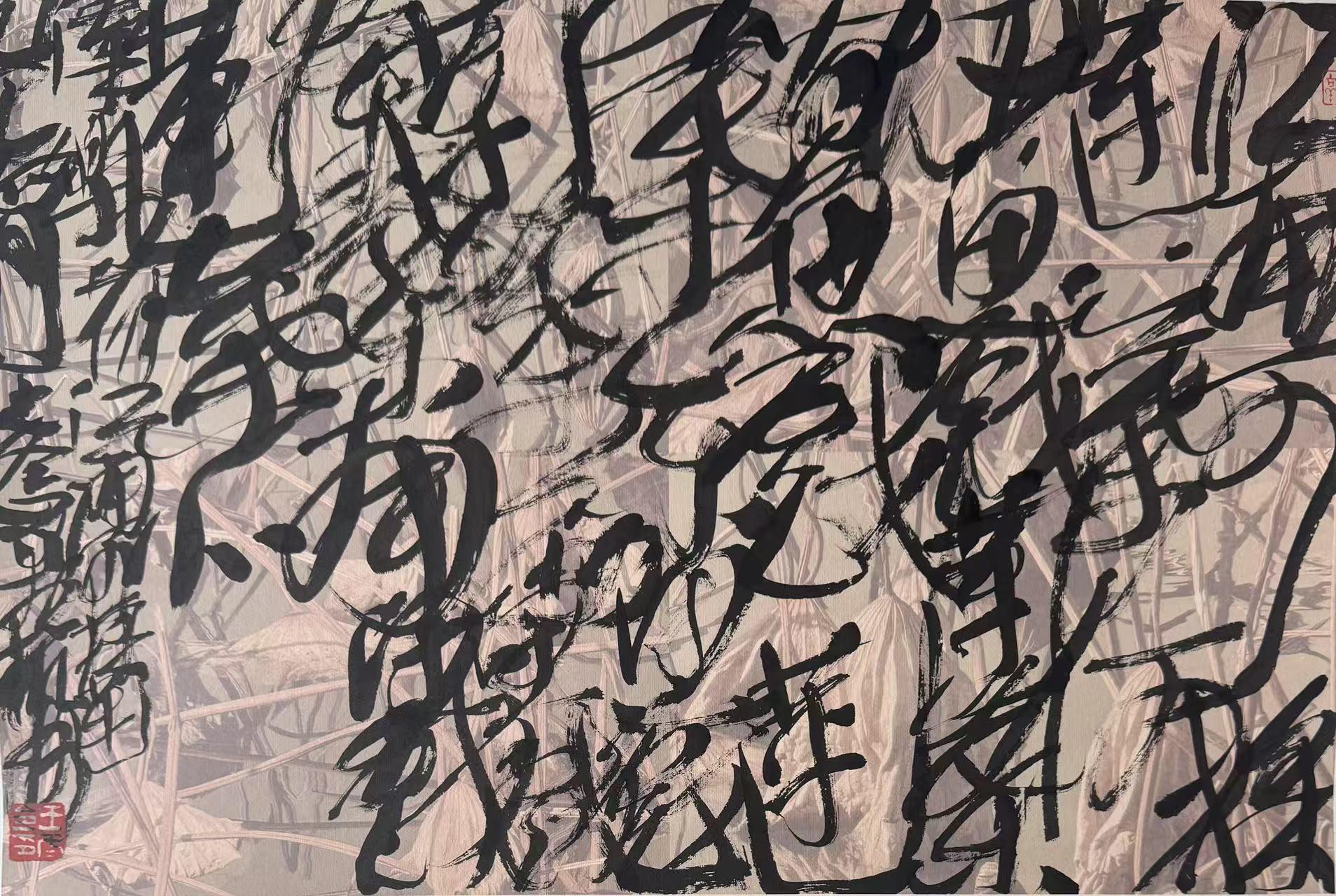
汉乐府 . 江南可采莲 Han Dynasty Poetry: Picking Lotus in Jiangnan, 2025
Ink on paper scan of photo
16 7/8 x 25 7/8 in | 43 x 65.6 cm

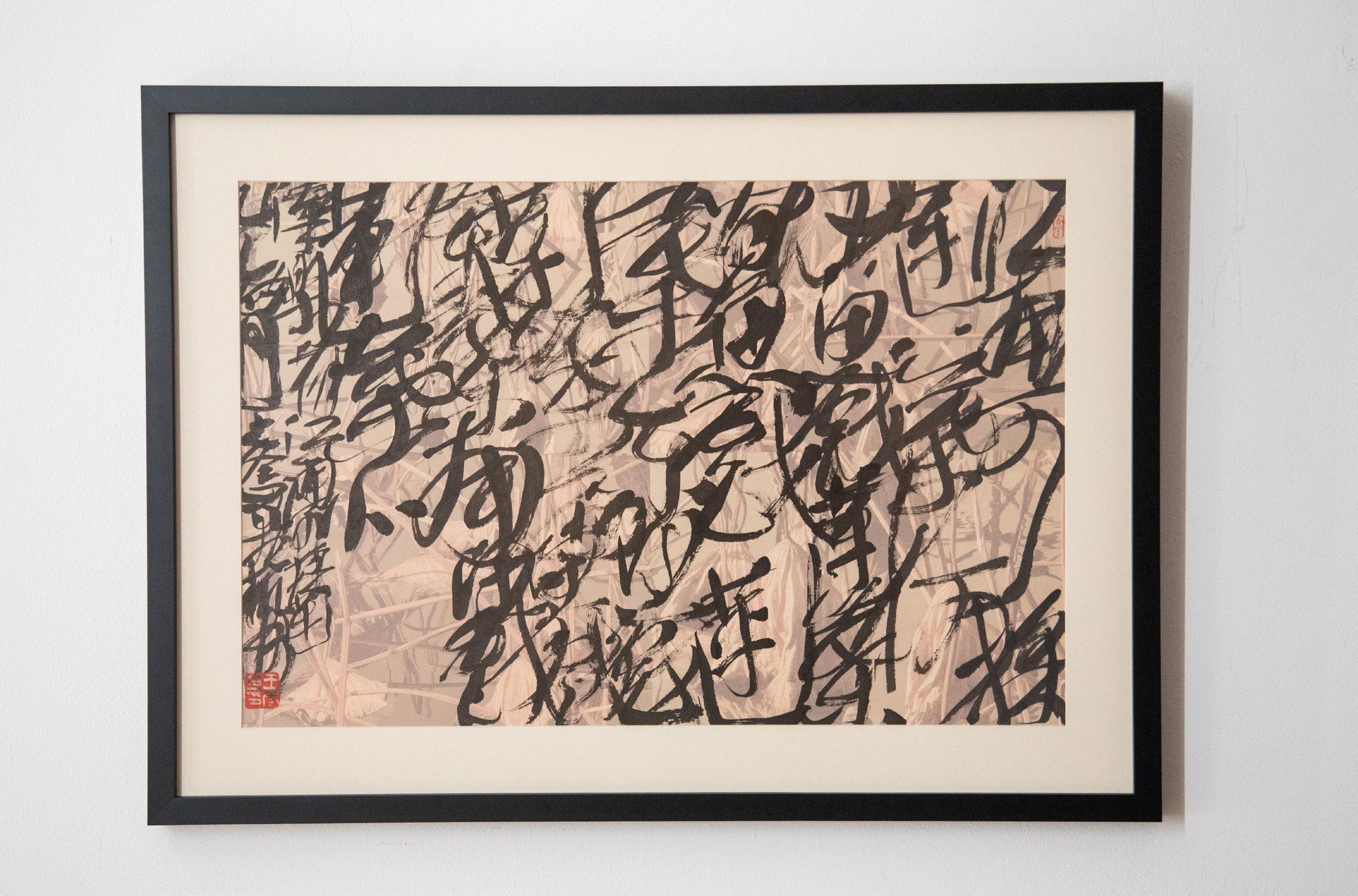
Framed: 58.5 x 80 cm | 23 x 31.5 in
汉乐府 . 江南可采莲 Han Dynasty Poetry: Picking Lotus in Jiangnan, 2025

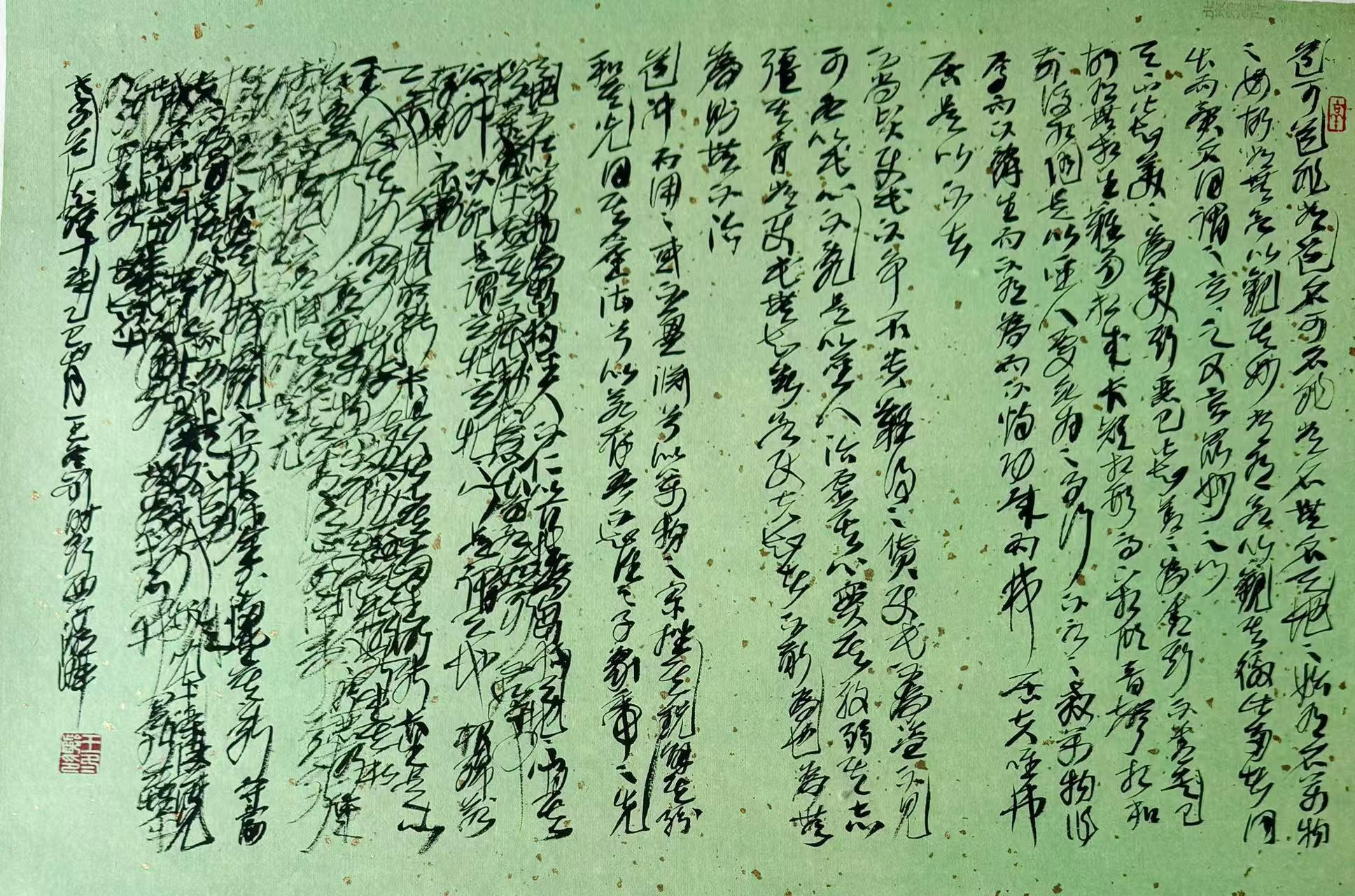
老子道德经 Lao Zi, (Tao Te Ching) Chapter 10, 2025
Ink on paper
17 3/8 x 26 3/8 in | 44 x 67 cm

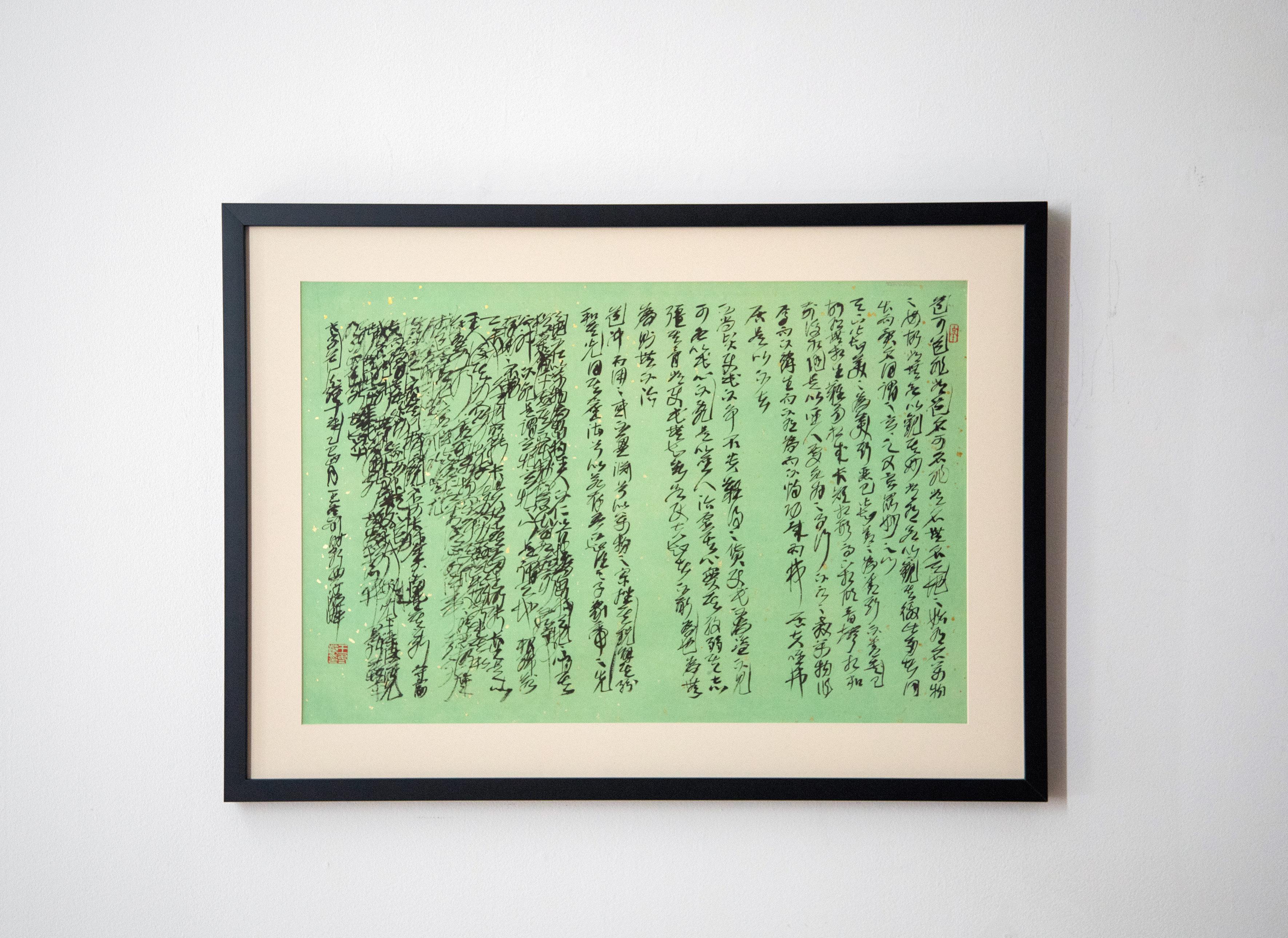
Framed: 58.5 x 80.5 xm | 23 x 31.75 in
老子道德经 Lao Zi, (Tao Te Ching) Chapter 10, 2025

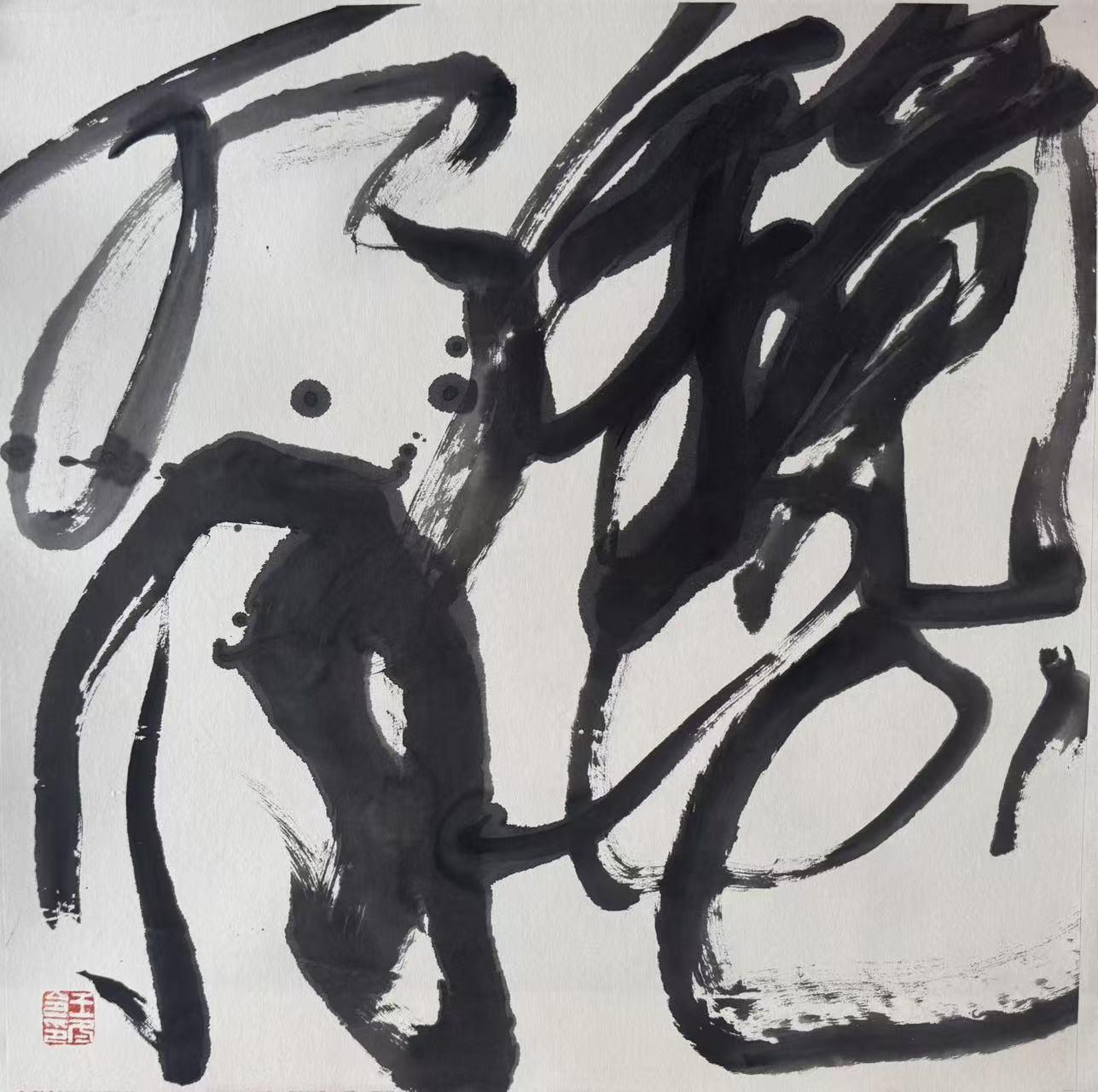
镜花水月 Flower in the Mirror, Moon on the Water, 2025
Ink on xuan paper
21 5/8 x 21 5/8 in | 55 x 55 cm

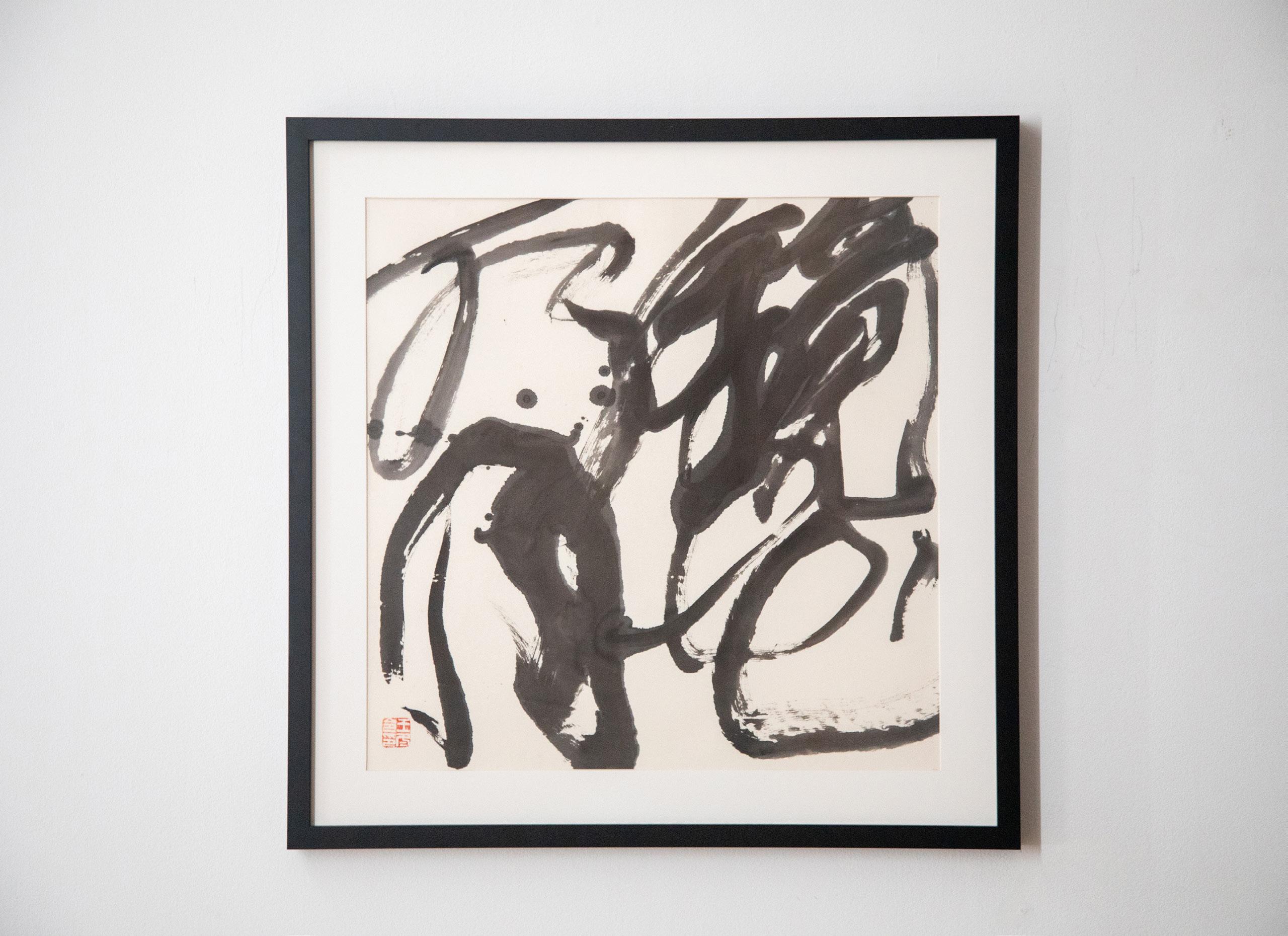
Framed: 70 x 70 cm | 27.5 x 27.5 in
镜花水月 Flower in the Mirror, Moon on the Water, 2025

Yang Tao: A Line Linking Past and Present
Preface to the Exhibition of Yang Tao’s Calligraphy
By Wu Weishan, at the National Art Museum of China, March 2022
Calligraphy is the art of the line.
In terms of space, the line renders written characters into a multitude of script forms, rich in visual variation and layers of meaning. Within this profusion of linear imagery lies a correspondence to the generative forces of the cosmos—it is both abstract and concrete. From the standpoint of linearity and line quality, this line travels from the oracle bone and bronze scripts to the clerical hands of poplar and tamarisk brush, from brush on silk to chisel on stone. It carries the dynamic evolution of stele and modelbook traditions, as well as the merging and diffusion of brush, ink, paper, and water. It brims with life and motion and manifests the very trajectory of culture.
In viewing Yang Tao’s calligraphy, I can say with confidence that his control of space, line, and texture is guided by principle. His work moves with measured restraint and release. Within the constraints of the round and the angular, the curved and the straight, his lines are charged with vitality and confidence. His expressiveness is powerful, suffused with a natural boldness. This stylistic character is a direct reflection of his personality.
Yang Tao observes the world with acute sensitivity. His scholarly rigor and interdisciplinary thinking demonstrate a mind that is both precise and expansive. Yet when moved by something profound, he becomes emotionally impassioned, creatively charged, and expressive with unrelenting intensity. These “polarities” in his nature are echoed in his calligraphy—on one end, the composed steel-line seal script; on the other, the unrestrained cursive. Of course, he works broadly across script types, devoting the same seriousness to clerical and standard script, which adds further richness to his calligraphic language. But the essential axis of his work lies in the firm structure of his seal script and the explosive force of his wild cursive. This tension of opposites forms a dynamic unity, releasing a wave of creative vitality and expressive energy.
Particularly noteworthy is his achievement in cursive script, which is a synthesis of natural disposition and deep scholarship. Stylistically, his cursive benefits greatly from the structural influence of seal and clerical scripts.
To write steel-line seal script, one must cultivate stillness, store up energy and force, practice patience and resilience. Only then can each stroke be rendered with fullness and strength. Yang Tao’s seal script draws upon such classical steles as Li Si’s Yishan Stele, Li Yangbing’s Sanfen Ji, and the Tang-dynasty Biluo Stele. His large-seal script is rooted in the bronze inscriptions of the Shang and Zhou dynasties. As a result, his calligraphy unites the graceful strength of the steel-line seal, the weight and unrestrained spirit of large seal, and the wave-like movement of clerical strokes. His line quality is solid, vigorous, and profound, his brushwork rising and falling like mountains—at once forceful and fluid.
His cursive writing, based in the wild cursive tradition of the Tang, also integrates the elegance of Song-dynasty forms. Drawing on the ancients, it breathes with its own natural spirit. Looking at his work as a whole, one finds it both sweeping and precise, smooth yet sharp. His art is governed by the line, powered by movement, and expansive in structure.

Yang Tao: A Line Linking Past and Present
Preface
to the Exhibition of Yang Tao’s Calligraphy
By Wu Weishan, at the National Art Museum of China, March 2022
As Yang Tao himself has stated:
“Calligraphy is the embodiment and interpretation of the Chinese spirit over thousands of years.”
His aim is to “awaken what is genuine through the hand that acts with intention, to reveal a luminous sincerity, and illuminate the original heart.”
This shows that his art aspires beyond calligraphy; it reaches toward culture and thought. This is what makes his presence in the calligraphy world so rare and valuable. If calligraphy is a medium for conveying the Way, what is left when the Way is absent? Philosophy, literature, calligraphy, and even pictorial imagination converge in a generative synthesis.
This, perhaps, is the highest realm of calligraphy. Within Yang Tao’s artistic world, one senses a strong metaphysical resonance. In reaching toward this lofty artistic realm, he has discovered boundless space. Grounded in the experience of modern life, attuned to the aesthetic needs of our time, he builds his art with thoughtful persistence, walking each step with conviction as he pursues his dream of a calligraphy that reflects his unique spirit.
A line in calligraphy is also a line of cultural vitality, constantly extending and never ceasing. Yang Tao walks steadfastly along this enduring dimension.

BIOGRAPHY YANG TAO 杨涛
b. 1968 in Anhui, China; Lives and works in Beijing, China
Yang Tao is a native of Xuancheng in Anhui Province, currently working at the China National Academy of Arts under the Ministry of Culture and Tourism. He is Director and Professor at the China Calligraphy Institute, as well as a doctoral advisor. He serves as a reviewer for the National Arts Fund and the China Postdoctoral Science Foundation, a member of the Exhibition Review Committee at the National Art Museum of China, and a guest professor at both the China Academy of Art and the Central Academy of Fine Arts. He is also a member of the Xiling Seal Engraver’s Society, among other affiliations. dream of a calligraphy that reflects his unique spirit.

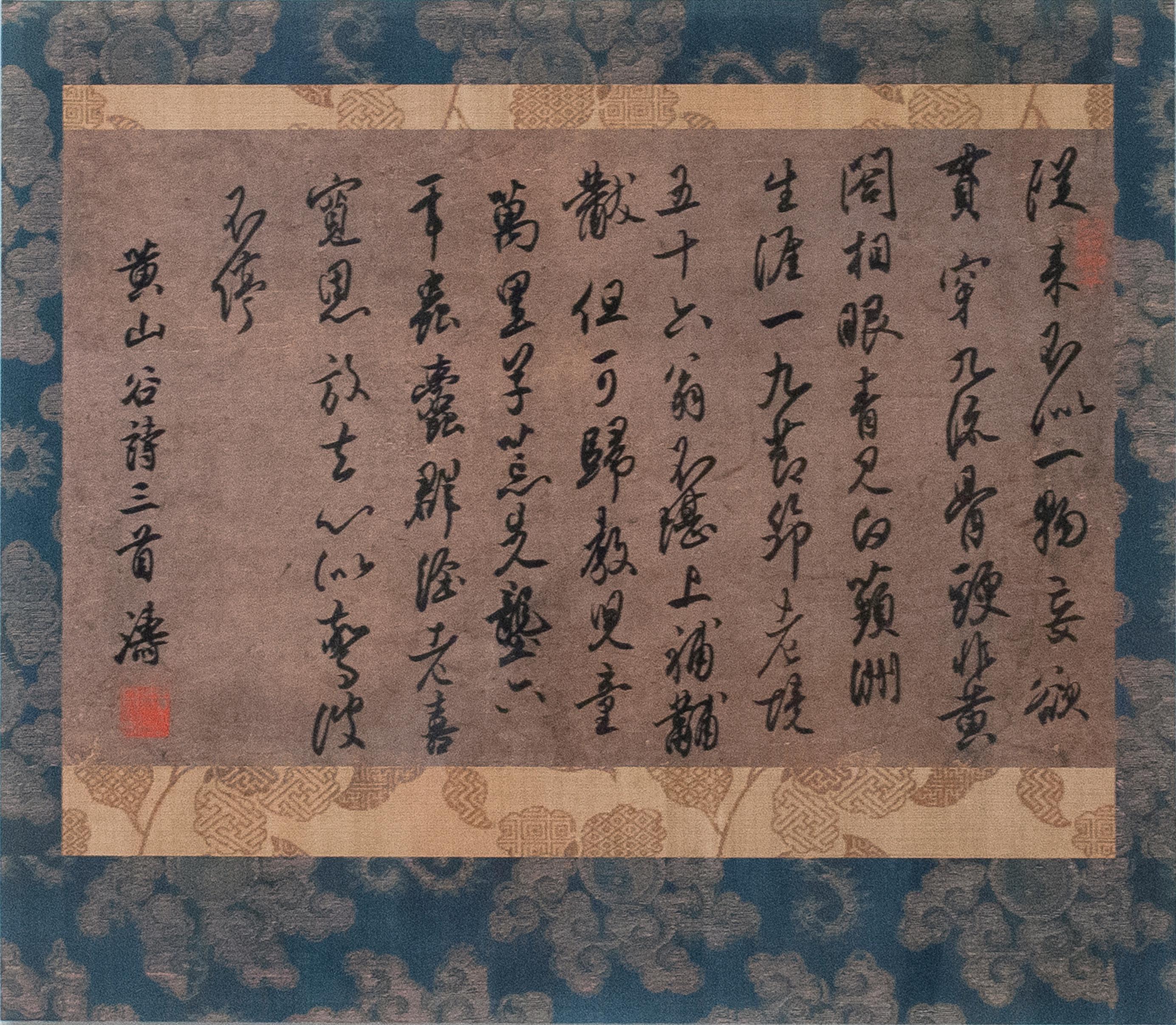
Three Poems by Huang Shangu, 2025
Ink on xuan paper
24 x 34.25 cm | 9.5 x 13.5 in
Mounted: 33.7 x 38.75 cm | 3.25 x 15.25 in
Framed: 47 x 52 cm | 18.5 x 20.5 in

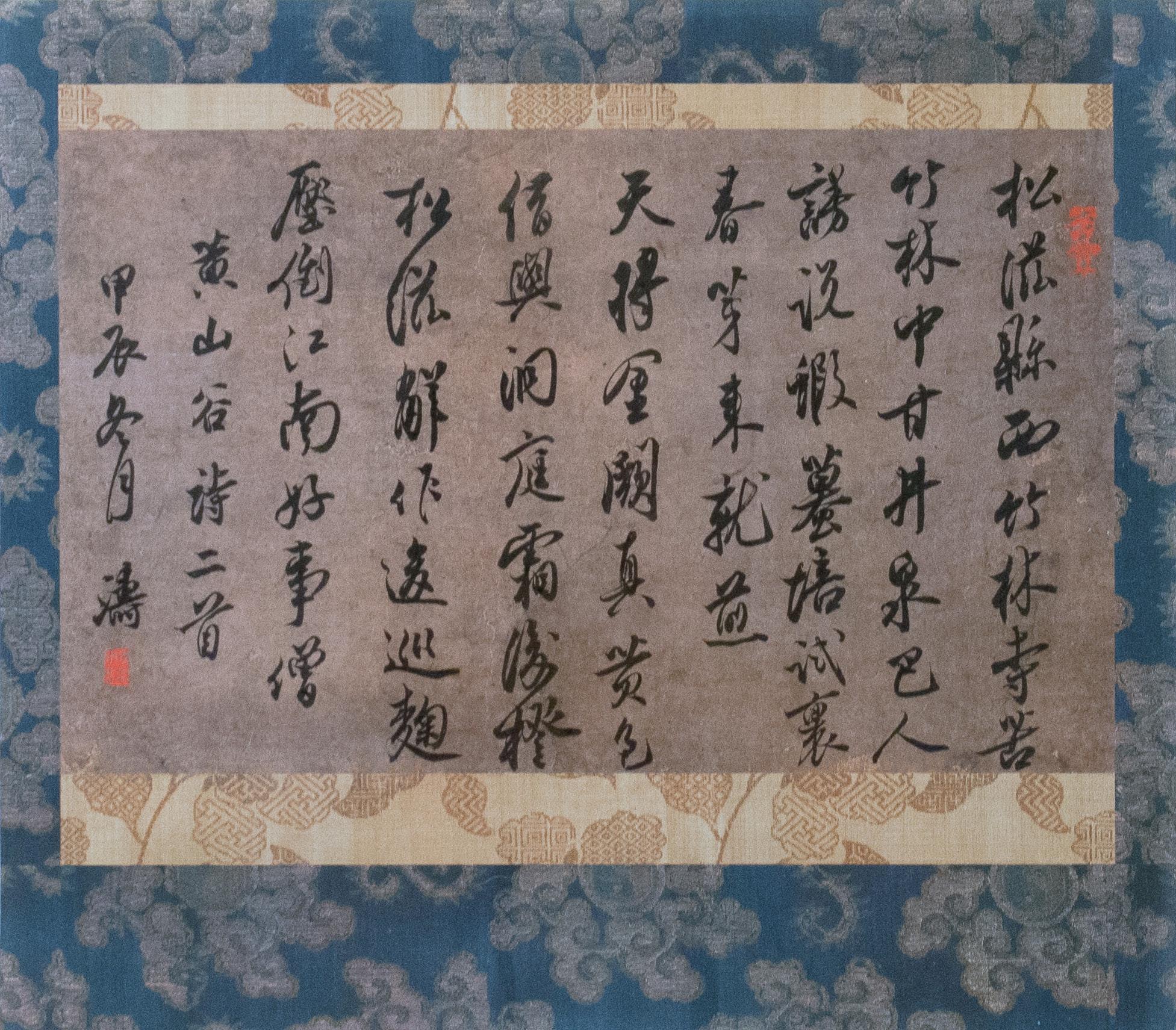
Two Poems by Huang Shangu, 2025
Ink on xuan paper
24 x 34.25 cm | 9.5 x 13.5 in
Mounted: 33.7 x 38.75 cm | 3.25 x 15.25 in
Framed: 47 x 52 cm | 18.5 x 20.5 in

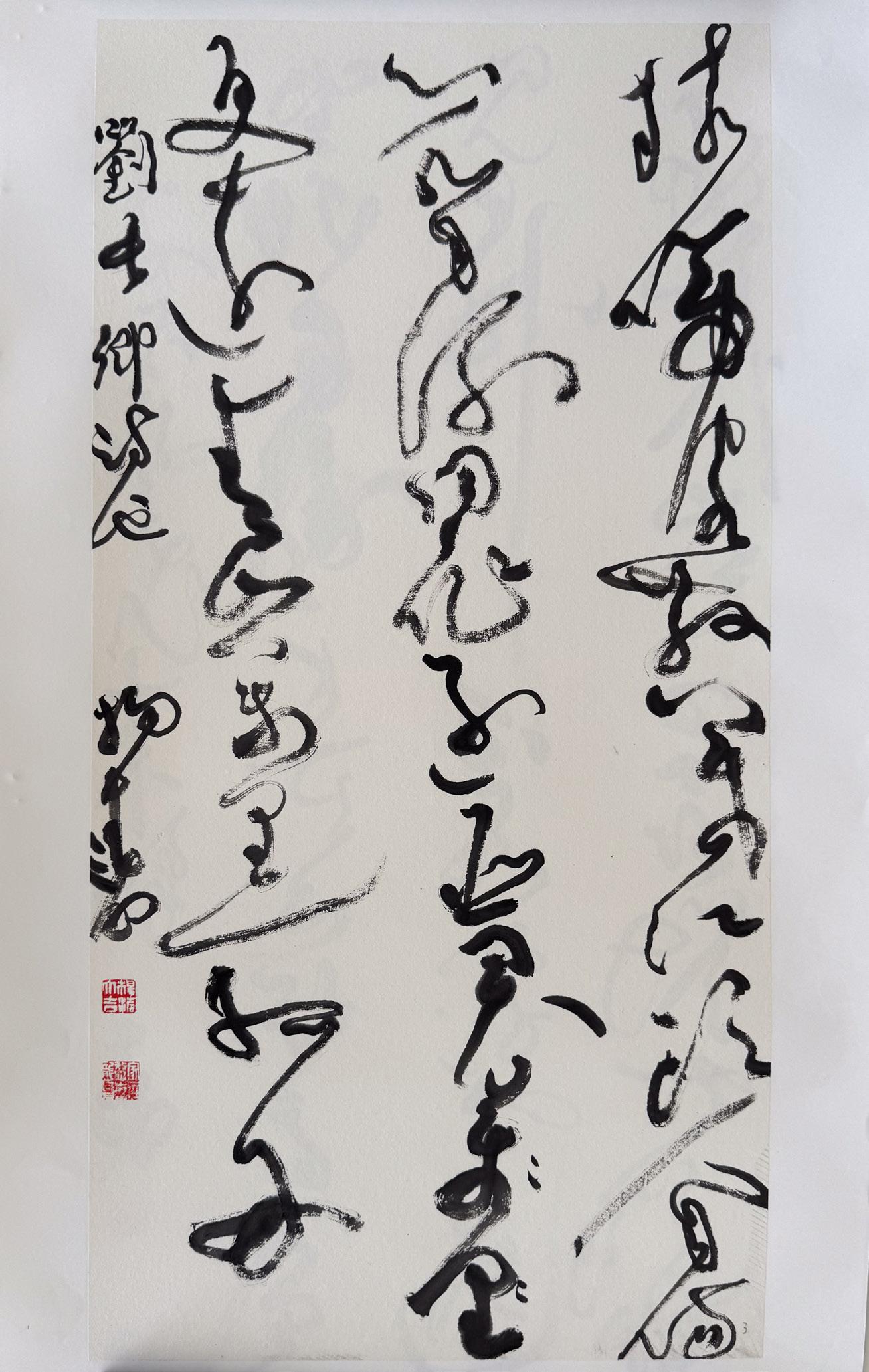
Ink on xuan paper
68.5 x 35 cm | 27 x 13.75 in
Framed: 85 x 48.3 cm | 33.5 x 19 in
刘长卿诗一首 A Poem by Liu Changqing, 2025

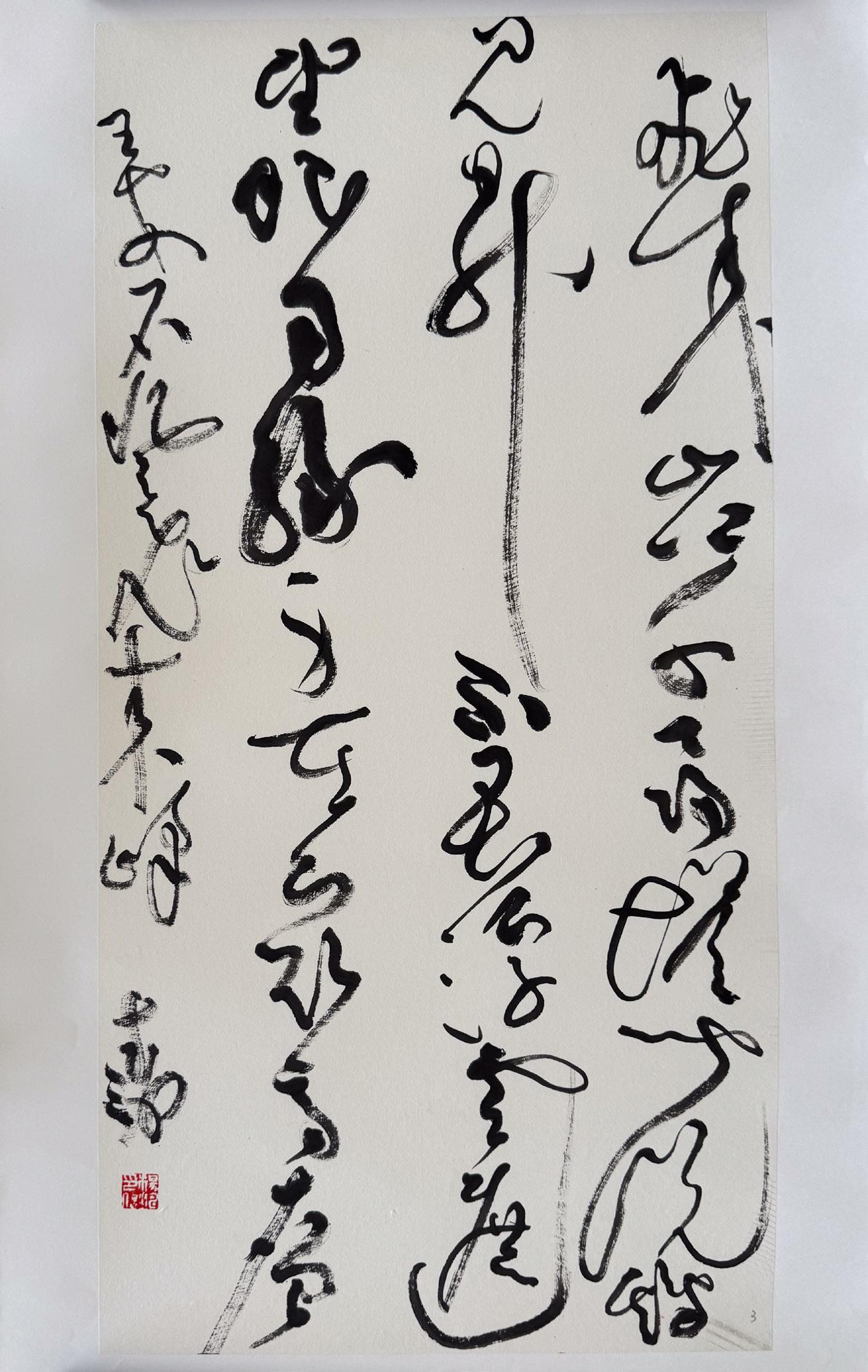
Ink on xuan paper
68.5 x 35 cm | 27 x 13.75 in
Framed: 85 x 48.3 cm | 33.5 x 19 in
王安石诗一首 A Poem by Wang Anshi, 2025

BIOGRAPHY
YU MINGQUAN 于明诠
b. 1963 in Leling, China; Lives and works in Shandong, China
Yu Mingquan, with alternate signature Yu Shihu Deng, is a professor and graduate advisor at Shandong University of the Arts, and chief expert of key disciplines in Shandong provincial universities. He serves as a member of the Cursive Script Committee of the Chinese Calligraphers Association, a researcher at the Chinese Calligraphy Institute of the China National Academy of Arts, a member of the Canglang Calligraphy Society, and a distinguished professor at several universities including Nanjing Normal University, Yunnan Normal University, and Hubei Normal University.
Since 1991, his calligraphy and seal carving works have been featured in national exhibitions and have received multiple awards. He has published numerous essays on calligraphy and poetry. In 1999, he participated in the National Symposium for One Hundred Outstanding Young Artists to celebrate the 50th anniversary of the founding of the People’s Republic of China, where he was awarded the title of “National Outstanding Young Artist” by the China Federation of Literary and Art Circles
His publications include Between Is and Is Not, What I Care About Is That Little Bit of Fun in Calligraphy, Ten Lectures on the Aesthetics and Practice of Epitaph Calligraphy, Looking with Eyes Closed, Where and What is Calligraphy, Complete Works of Chinese Calligraphy: Huang Binhong, Lin Sanzhi, Tao Bowu, Calligraphy and Seal Carving Tutorial, Regular Script Tutorial, Selected Works from the Studio of Frequent Dreams, Self-Righteous, Ink Writing New Literature: Yu Mingquan Calligraphy Collection, Chinese Ceramic Seals: Yu Mingquan Volume, Contemporary Chinese Painting and Calligraphy Series: Yu Mingquan, Trying Wine in a Single Garment: Selected Poems of Yu Mingquan, Chinese Contemporary Masters Painting Collection: Yu Mingquan, and the English poetry collection One Fish, Two Fishes, among others.
In 2015 and 2016, he was twice invited to speak at the Xu Zhimo Poetry and Art Festival at King’s College, University of Cambridge. On New Year’s Day 2016, his long poem Groaning in Dots and Strokes was adapted into a poetic drama and staged at the Guangzhou New Year Poetry Gala.

Ink on xuan paper
44 x 148.6 cm | 17.25 x 58.5 in

Framed: 57.8 x 162.6 cm | 22.75 x 64 in
Poem by Yu Mingquan (屈原 Qu Yuan), 2025

屈原 Qu Yuan
Poem by Yu Mingquan
总是匆匆地行走 我不是说你的双脚 我是说你的心
总是在苦苦地吟唱 我不是说你的喉咙 我是说你的眼泪
前面是茫茫的雾霾 雾霾封锁着寒冷的江水 有路你不走
有船你不坐
你的选择就是抛弃任何选择 芦苇和水草
为你穿一身素白
鱼和水鸟 为你裹一袭黑纱 默默地向五月致敬
向端端正正的五月致敬 人们划着龙舟 涌向五月最深处
凭吊一根宁折不弯的骨头 你站在五月端午的开端 一动不动,捻着
倔强的胡须 问天
旧作《屈原》
Qu Yuan
You are always walking in haste— I don’t mean your feet, I mean your heart. Always singing in pain— I don’t mean your throat, I mean your tears. Ahead, a vast smog— a haze sealing off the cold river. There is a path, yet you don’t take it. There is a boat, yet you don’t board. Your choice is to abandon all choices. Reeds and water grass dress you in plain white. Fish and waterbirds wrap you in a veil of black. Silently, you salute May, salute the solemn, upright May. People row dragon boats, rushing to the deepest part of May, to honor a spine that would rather break than bend. You stand at the threshold of May, motionless, twisting your stubborn beard, questioning the heavens.

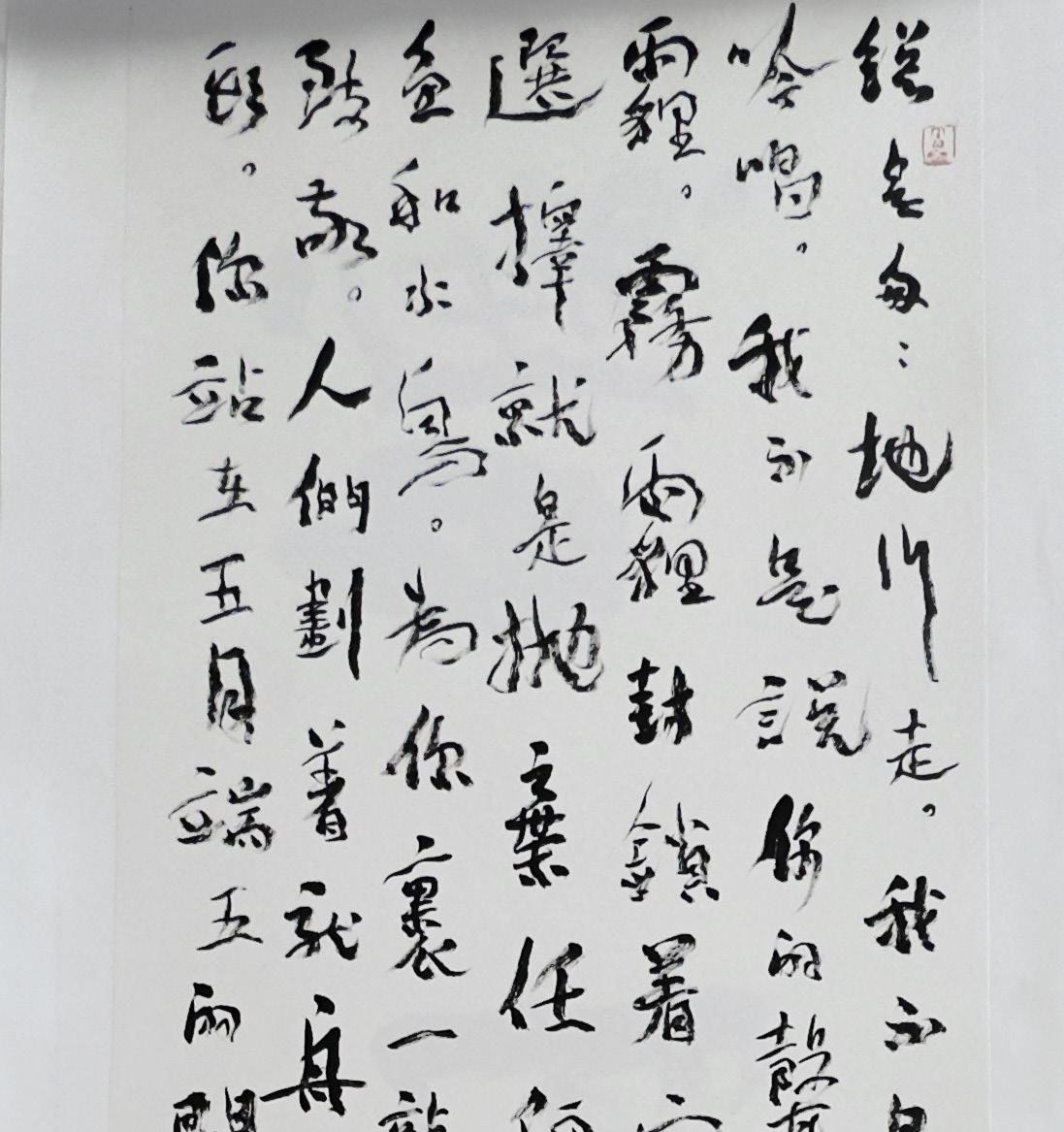
Detail: Poem by Yu Mingquan (屈原 Qu Yuan), 2025


Vast and luminous, free of all dust, 2025
Ink on xuan paper

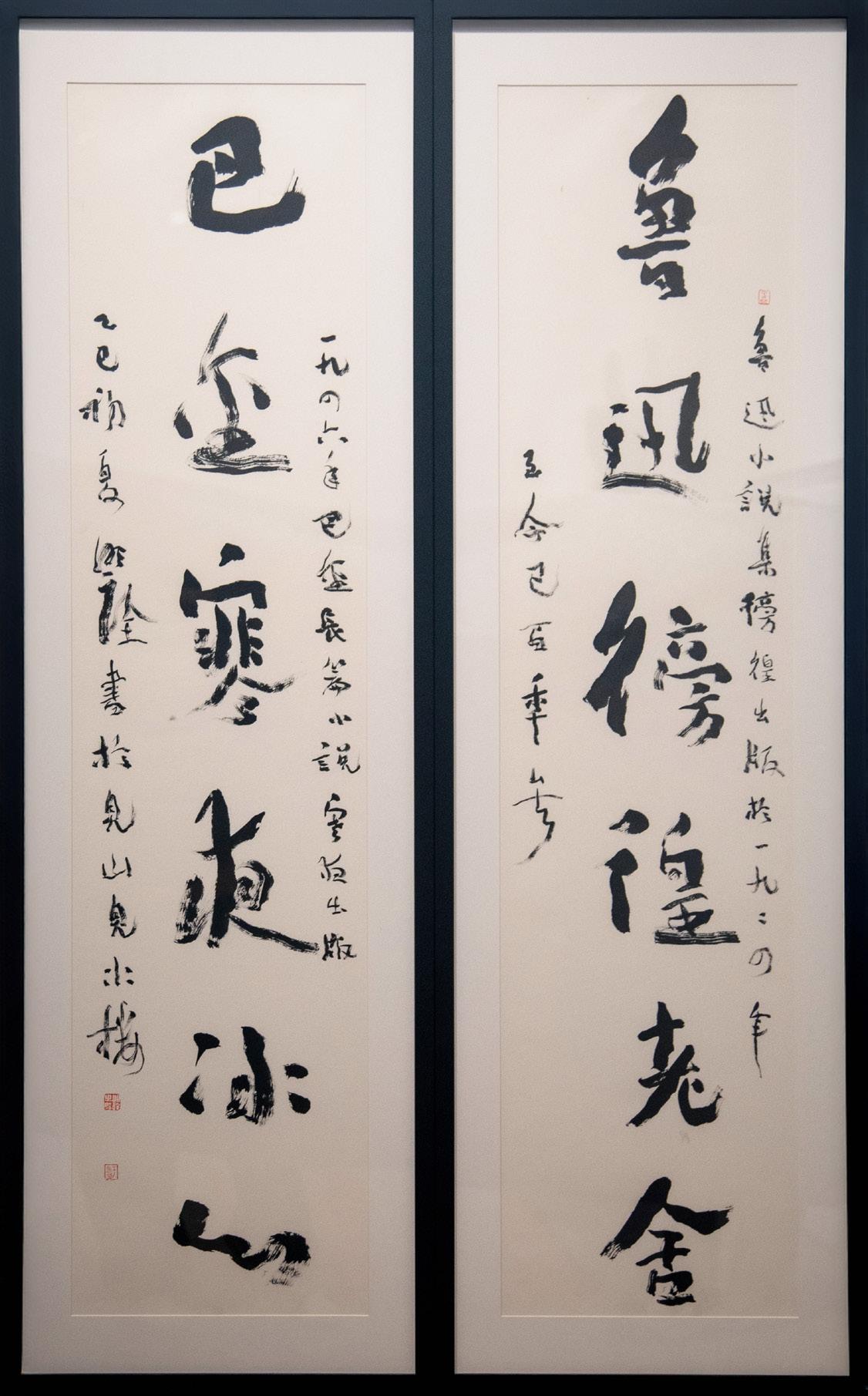
魯迅徬徨老舍 Lu Xun, Wandering, Lao She (right)
巴金寒夜冰心 Ba Jin, Cold Nights, Bing Xin (left), 2025
Ink on xuan paper
54.5 x 27 in | 138.4 x 50.8 cm
Framed: 61.5 x 38.5 in |156.2 x 97.8 cm

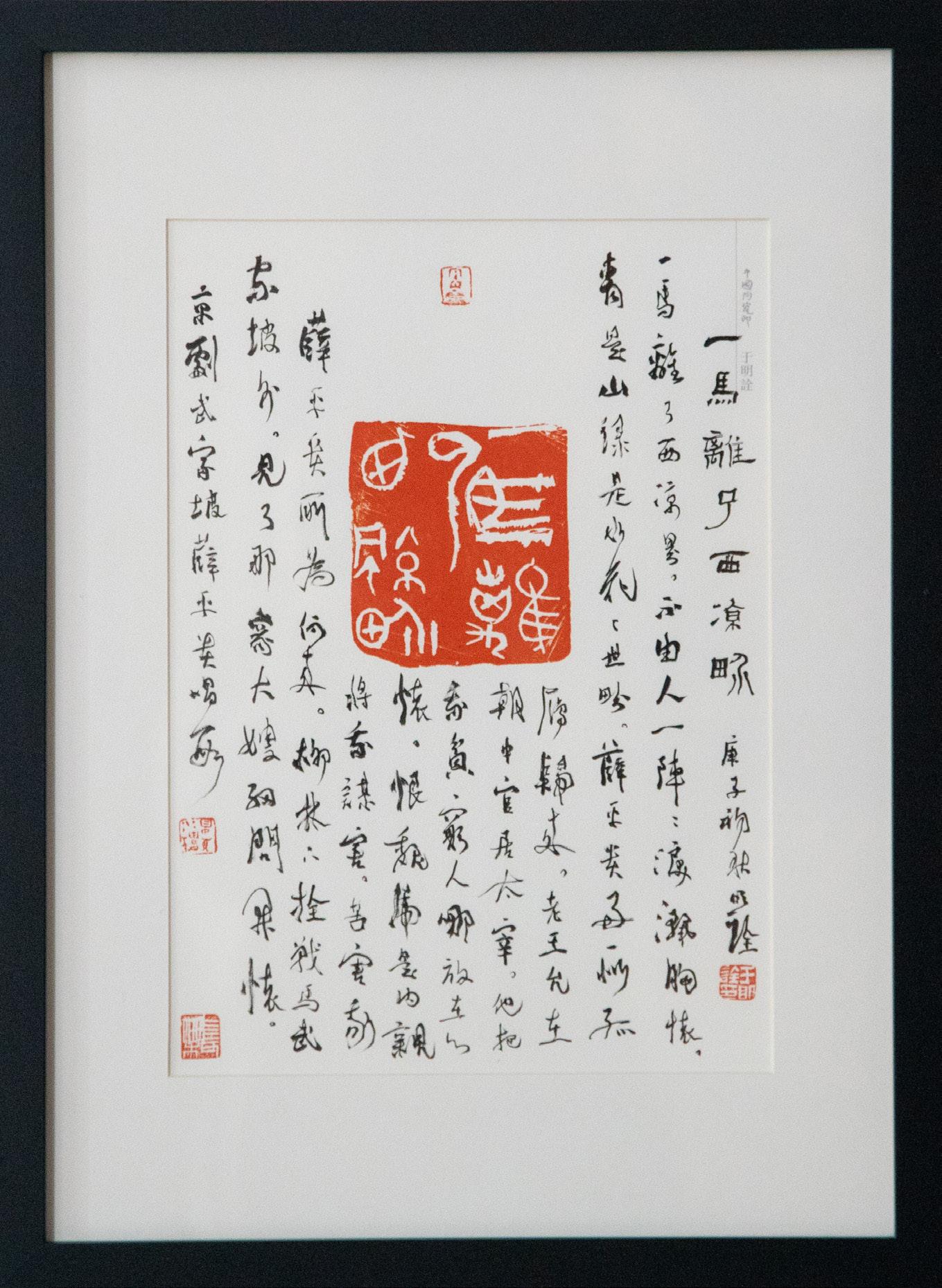
Xue Pinggui’s Arias from the Peking Opera Wu Jiapo, 2025
Ink on xuan paper
35.5 x 25.5 cm | 14 x 10 in
Framed: 54.6 x 40.6 cm | 21.5 x 16 in

BIOGRAPHY ZHAO XUESONG 赵雪松
b. 1963 in Shandong, China; Lives and works in Shandong, China
Zhao Xuesong (formerly used the pen name “Xuesong”), born in 1963, is a poet and calligrapher from Yangxin County, Shandong Province. He graduated from the Chinese Department of Shandong University and worked at the Binzhou Television Station in Shandong (now retired). He began writing poetry in the mid-1980s and co-founded the independent literary journal Poetry with friends.
His body of work, spanning more than a million words of poetry, essays, and art criticism, has been featured in literary publications throughout China and abroad. His poetry collections, both solo and in anthologies, include: Wound, Selected Poems of Xuesong, Selected Poems by Seven Poets, The Yellow River Estuary Poets’ Tribe, Ahead Is Just a Place Up Ahead, I Took Part in the Falling of That Leaf, and Striking a Match. His prose collections include Through-Wind, My Tuhai River, and Writing the Earth.
His calligraphy has been exhibited in the 7th and 10th National Calligraphy and Seal Engraving Exhibitions, 2nd and 3rd National Top 100 Calligraphy Exhibitions, 8th National Youth Calligraphy and Seal Carving Exhibition, and the 1st through 4th Chinese Calligraphy Lanting Awards Exhibitions, among others. He was invited to show work in the 1st and 2nd National Young and Middle-Aged Calligraphy Masters Exhibitions and the Origin and Evolution — Jin and Tang Dynasty Regular Script Studies Exhibition.
His calligraphy has received numerous honors: Best Original Couplet Award at the 5th National Couplets Calligraphy Exhibition, First Prize at the 1st National Album Leaf Calligraphy Exhibition, the Shandong Province Calligraphy Contribution Award, and the Taishan Arts Award for Calligraphy, among others. He has published several volumes including Calligraphy Community of the Yellow River Delta — Zhao Xuesong Volume and Zhao Xuesong’s Calligraphy of Ancient Monastic Poetry.
His poetry and prose have earned him awards such as the Qilu Literature Award, Taishan Arts Award for Literature, Qilu Prose Award, Rougang Poetry Award, Poetry Monthly’s Exploratory Poetry Award, the Classic of Poetry Award, the Houtian Poetry Award, and the Shandong Literature Award. He currently lives in Binzhou, Shandong.



海日生殘夜 The sun upon the sea is born within the lingering night; 江春入舊年 The spring upon the river arrives within the passing year, 2025
Ink on xuan paper
86.4 x 25.4 cm | 34 x 10 in each; 34 x 20 in | 86.36 x 50.8 cm overall


23 x 119.38 cm | 9 x 47 in
Framed: 41.9 x 142.2 cm | 16.5 x 56 in
心經 Heart Sutra, 2025
Ink on xuan paper

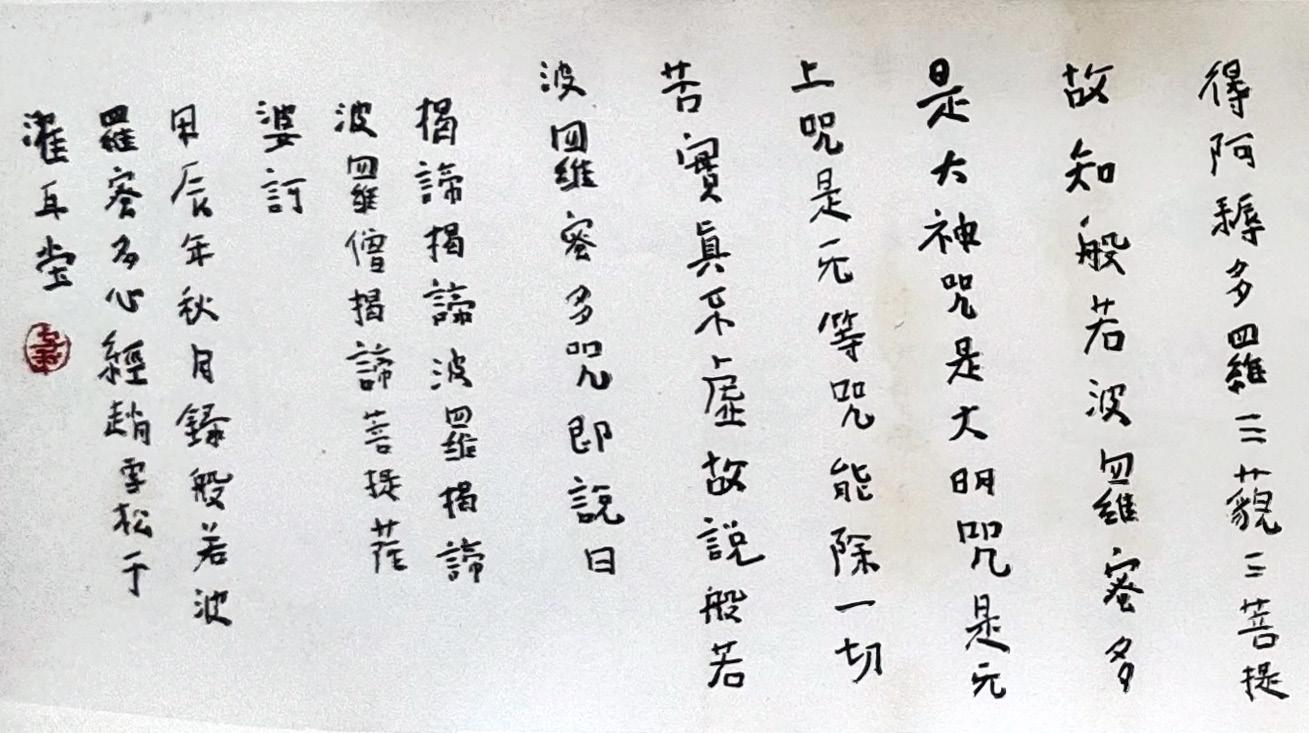
Detail: 心經 Heart Sutra, 2025

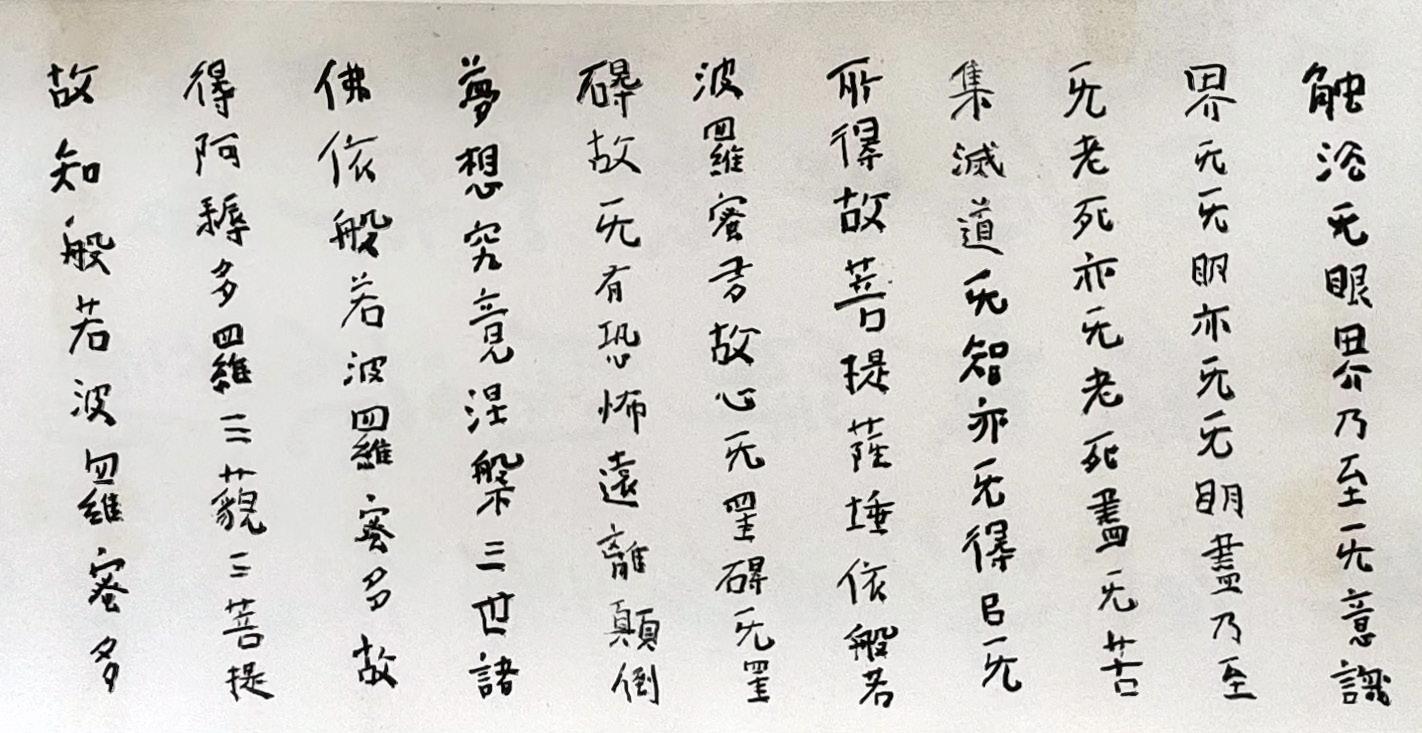
Detail: 心經 Heart Sutra, 2025


徐渭詩蘭亭次韻 Xu Wei’s Poem “Following the Rhymes of ‘Lanting, 2025 Ink on xuan paper
33 x 127 cm | 13 x 50 in
Framed: 45.75 x 141 cm | 18 x 55.5 in

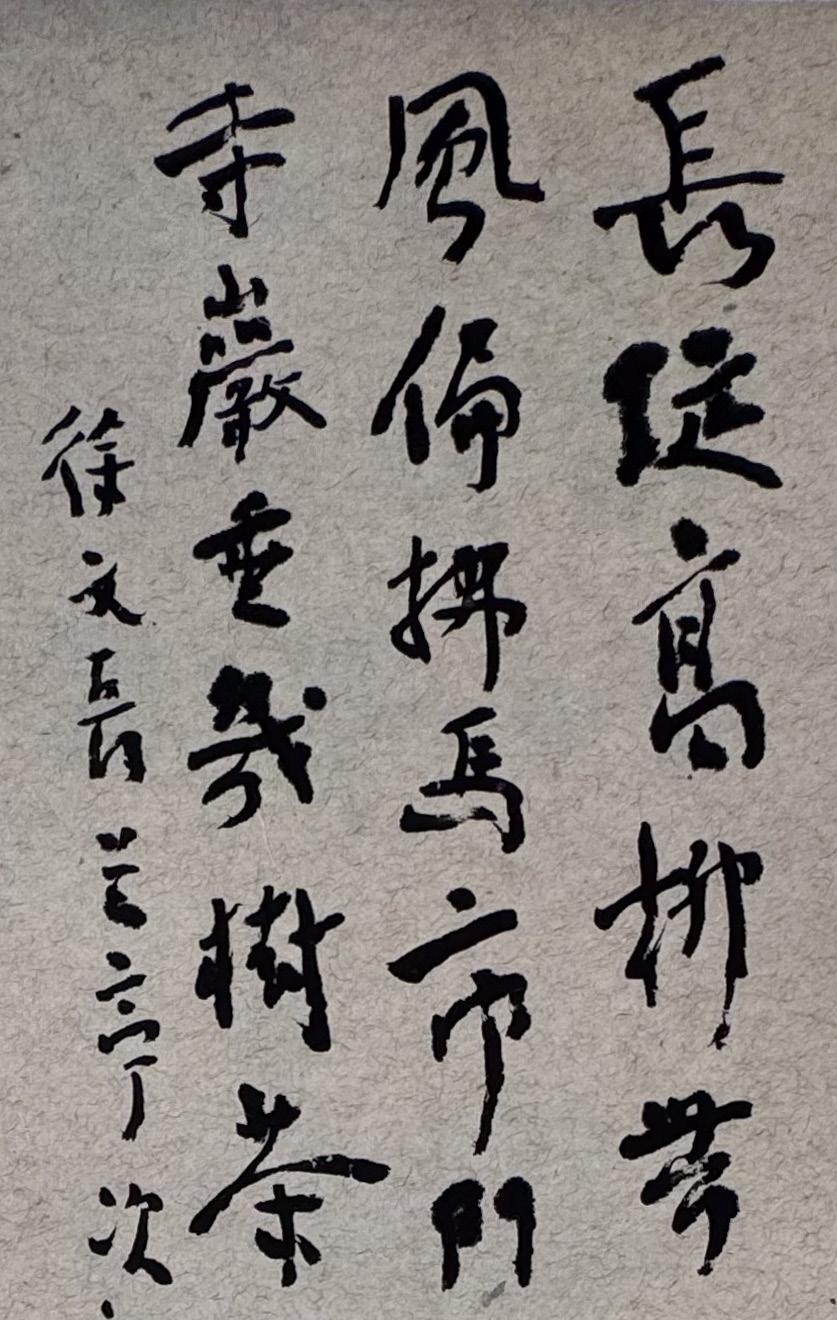
徐渭詩蘭亭次韻 Xu Wei’s Poem “Following the Rhymes of ‘Lanting, 2025
Detail:


Boundless Longevity of Sentient Beings, 2025
Ink on xuan paper
28 x 130.8 cm | 11 x 51.5 in
Framed: 48.3 x 153.6 cm | 19 x 60.5 in
無邊眾生壽
